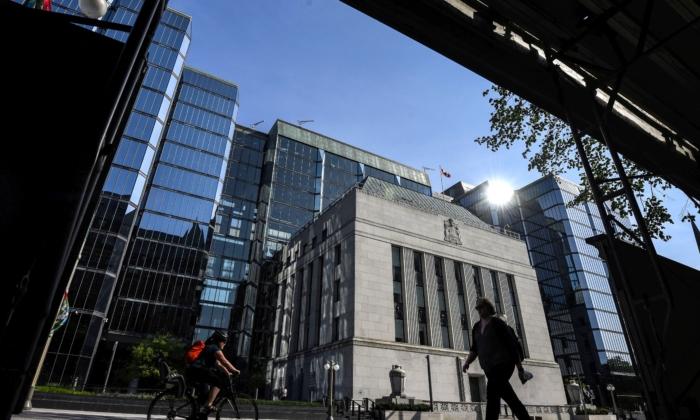Canada’s oil and gas sector is clamouring for emergency aid and its leaders have a plethora of proposals for the federal government, including the controversial option of selling equity stakes—potentially converting government loans to companies into ownership shares.
In his March 22 daily briefing, Prime Minister Justin Trudeau said the already-announced $82 billion was “only a very first step.” He has repeatedly said that everything is on the table.
The survival of energy companies is at hand due to the sharp drop in demand caused by the CCP (Chinese Communist Party) virus—commonly known as the novel coronavirus—and due to Russia and Saudi Arabia engaging in an oil price war, thus refusing to cut their production. With the price of the U.S. oil benchmark West Texas Intermediate (WTI) below US$25 a barrel, companies’ cash flow is evaporating. And with Western Canada Select—the Canadian benchmark—at about US$9 a barrel, it’s a money-losing proposition to produce it.
Suncor became the latest company to add to the parade of capital spending cuts on March 23, announcing a 26 percent ($1.5 billion) reduction compared to the original 2020 plan. Its stock is down 60 percent in the last three months and is representative of the pain in the industry. The Toronto Stock Exchange energy sector is down about 50 percent in the last three months.
“It’s incredibly urgent,” Business Council of Alberta president Adam Legge told BNN Bloomberg on March 25. “We’re worried that more and more companies are on the margin.”
He’s looking for the feds to provide the industry with the necessary funds to survive, saying that activity is slowing to a complete halt. The challenge is to keep the doors open at as many companies as possible.
The government has created programs to make loans to companies, but given the diminishing prospects for the industry due to onerous regulation and environmental pushback, getting repaid is anything but a certainty.
Thus the significant amount of loans needed from the government may get converted into equity stakes, which is what happened during the financial crisis with the bailouts of GM and Chrysler.
At a luncheon in Ottawa on March 12, Alberta Premier Jason Kenney, who was part of Stephen Harper’s cabinet during the financial crisis, said the dire situation of the energy sector requires at least as much attention as the automakers received in 2009.
The idea of a U.S.-style TARP (Troubled Asset Relief Program), in which the government buys shares in distressed companies, has been something Kenney and the Business Council of Alberta have advocated.
But Carleton University management professor Ian Lee says the government should not be in the business of owning private companies and dictating how they run their operations.
Picking Winners and Losers
The conflict with taking equity stakes in the oil and gas companies, Lee reiterates, is that the government should not be in the business of picking winners and losers.
“When you’re putting equity into a company, equity is very different from debt. Equity is ownership. And you are really truly picking winners and losers,” he said.
The conflict of interest arises from what might be motivating the government to bail out one company rather than another.
“There are good political reasons, strategic reasons why the governments really shouldn’t take an equity position,” Lee said. “I know in Russia, they do it. In Saudi Arabia, they do it. In China, they do it. But in the Anglo-American world, there is a belief that you don’t.”
The can of worms the government would not want to get involved in is dictating to companies getting bailouts how they should conduct their operations, not to mention imposing limits on buying back stock and paying executive bonuses—something that generated widespread reprisals during the financial crisis.
“I’m not sure I know of anybody that thinks the government has a better understanding of how to run the oil and gas industry than the people in the oil and gas industry,” he said.
“The role of any government in a Western economy is to be the referee of the hockey game, not to play on one of the hockey teams. And not to be a general manager of one of the teams.”
In December 2018, the government made $1.6 billion available in loans to the industry. Rachel Notley, Alberta’s premier at the time, said she expected more, but further support has not moved the needle and the situation has worsened.
Export Development Canada told The Epoch Times that it has lent more than $780 million as of Feb. 28 this year.
Safety Net for Companies
As to the question of who should get bailout money—the companies or the employees—Lee says that if the companies aren’t around, people won’t have jobs to go to.
“If you save the companies, you’re creating a permanent solution … whereas if the companies disappear, then the government has a long-term problem of supporting these people,” he said.
But the political will has to be there to help the oil companies, which, while in similar dire straits as the automakers were in 2009, don’t benefit from political representation.
Being based in the heart of southern Ontario’s manufacturing heartland worked to the automakers’ advantage, whereas the energy sector is centred in Alberta, where the Liberals now have no MPs. The political dynamic is not in favour of the oil and gas sector, Lee says.
In total, $13.7 billion was pumped into GM and Chrysler by the province of Ontario and the federal government. In total, the governments wound up losing $3.5 billion after the feds sold their stake in 2015, according to The Globe and Mail.
Alberta energy company CEOs are calling for the government to defer taxes and royalty collections so the firms can have the cash flow to maintain operations. A way to boost employment is to fund the cleanup of orphan oil wells left behind during difficult times in the industry.
Canada’s current aid package of $82 billion—or about 3.5 percent of GDP—pales in comparison to the amounts other nations are spending on their economies. In contrast is the U.S. stimulus package of US$2 trillion, which is bigger than Canada’s entire economy.





